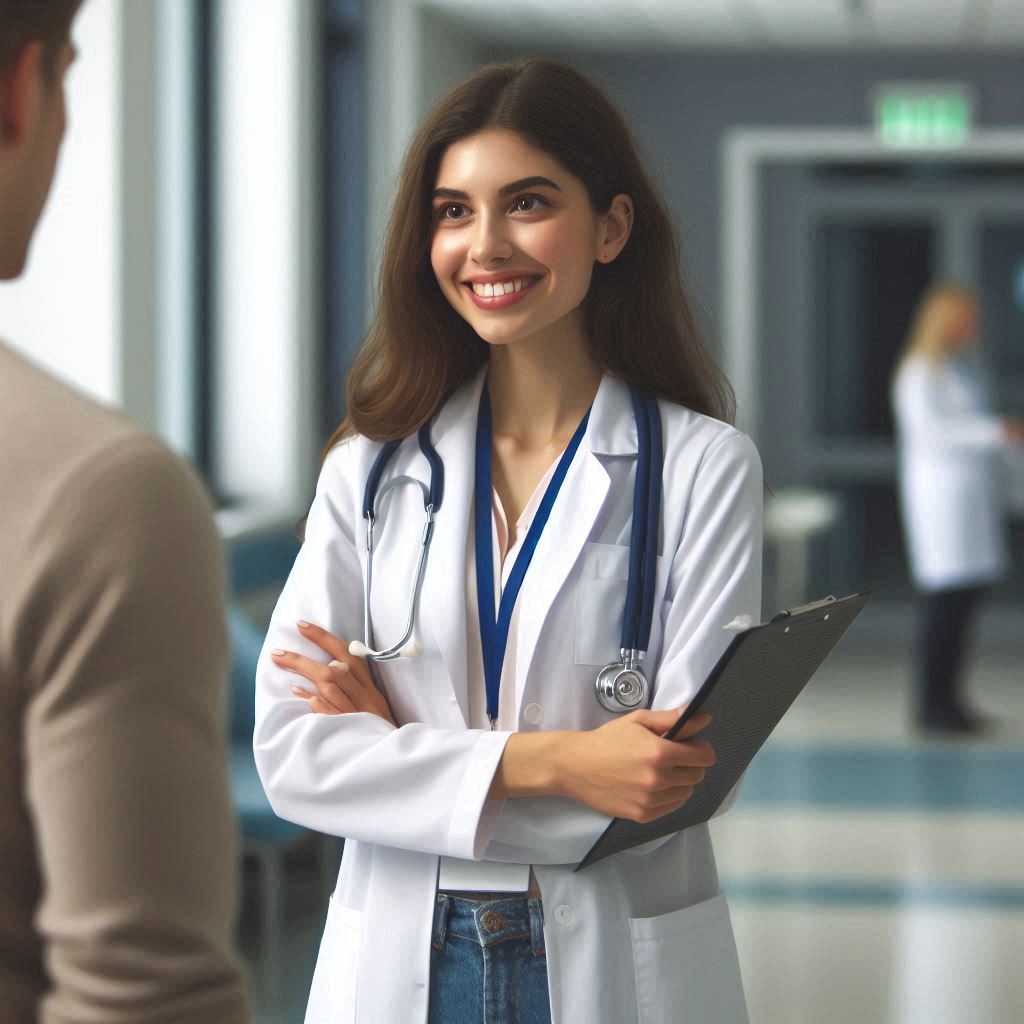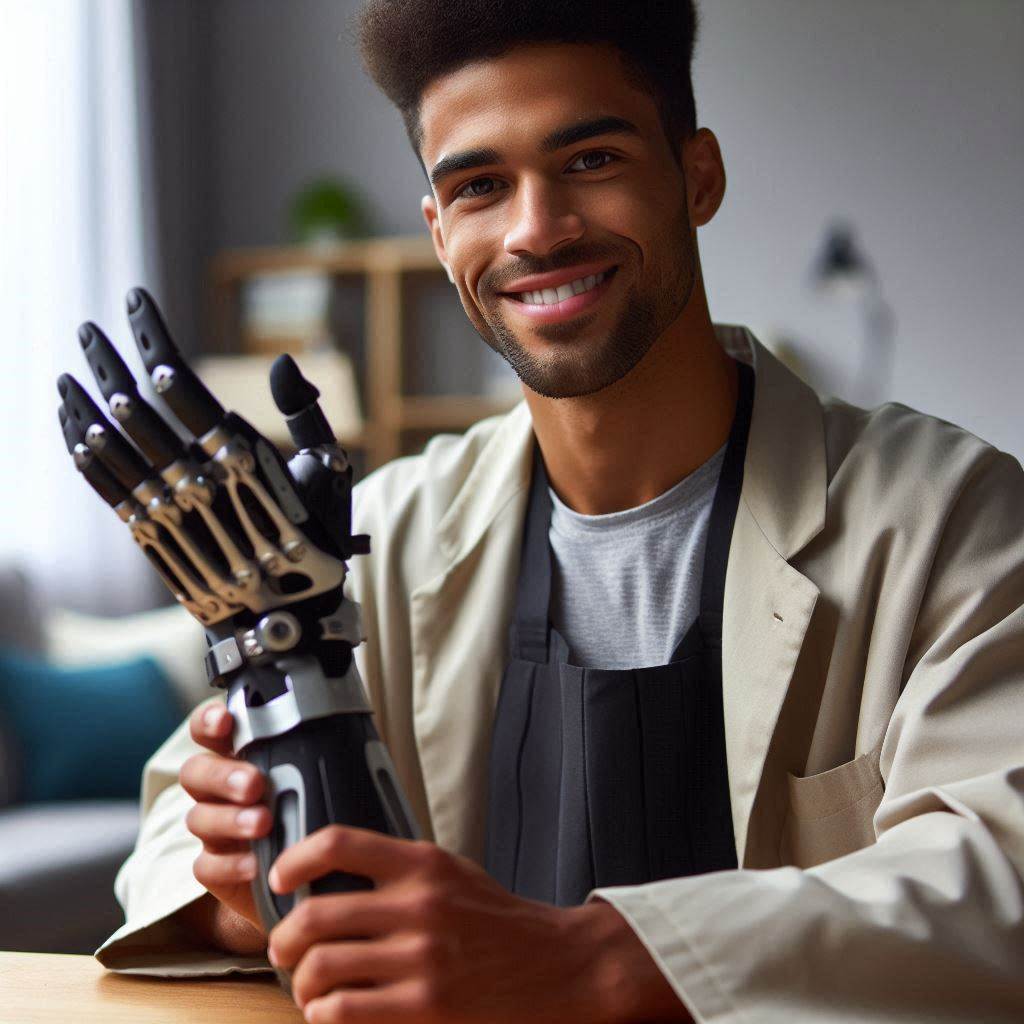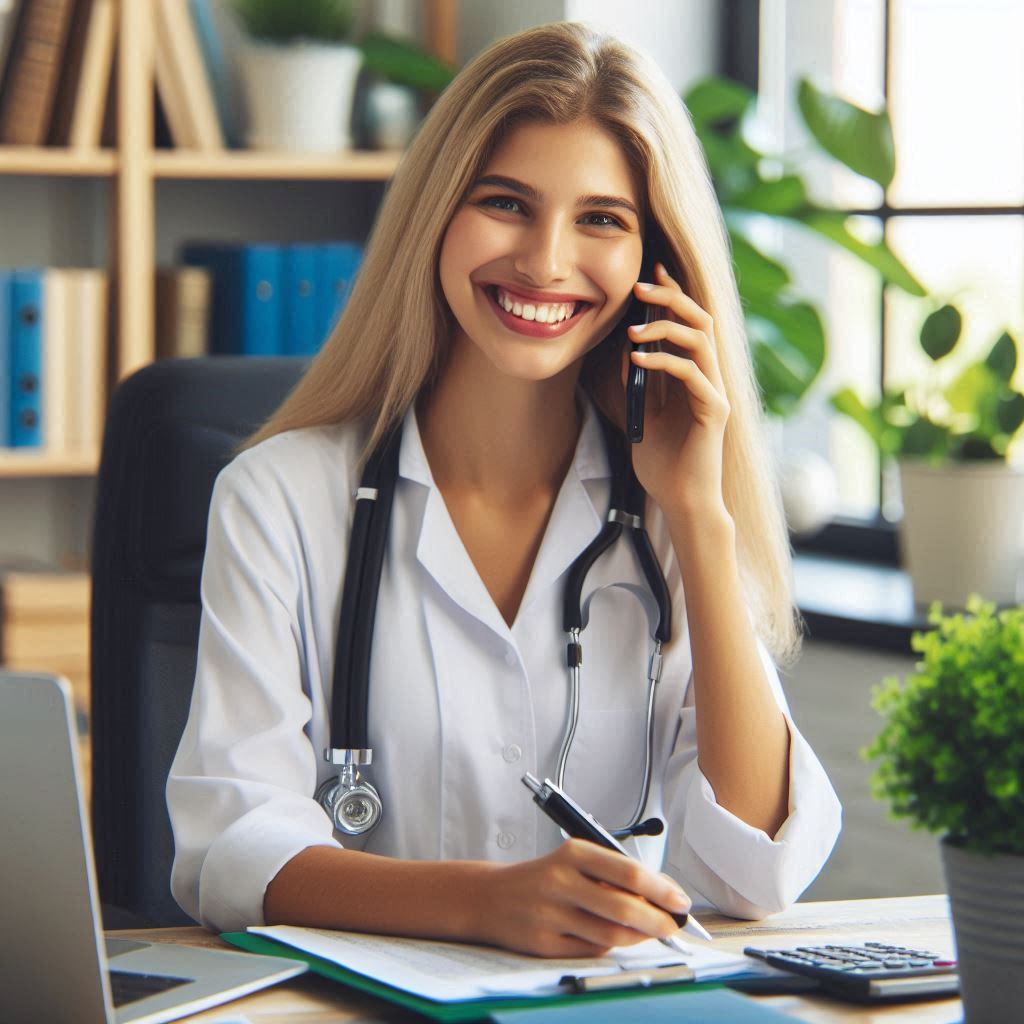Introduction
Orthotics and prosthetics improve the quality of life for individuals with physical impairments.
Orthotics are custom-made devices that support or correct the function of limbs or the spine.
Prosthetics replace missing limbs, enabling users to regain mobility and independence.
Innovations and advances in this field are crucial for enhancing patient outcomes and providing more natural and functional solutions.
New materials and technologies have revolutionized the design and functionality of orthotic and prosthetic devices.
Advanced 3D printing techniques allow for highly customized and precise fittings.
Smart prosthetics equipped with sensors and microprocessors offer improved movement and control.
These advances also reduce the weight and increase the comfort of the devices. This blog post will explore the latest innovations in orthotics and prosthetics.
It will highlight the benefits these developments bring to patients and the potential future advancements.
Understanding these innovations helps appreciate the significant progress in the field. It also underscores the importance of continued research and development.
By staying informed, patients and practitioners can make better decisions about orthotic and prosthetic care.
This blog aims to provide a comprehensive overview of current trends and future directions in orthotics and prosthetics.
It will also discuss the impact of these advances on patients’ daily lives.
Through this exploration, readers will gain insight into the transformative potential of modern orthotic and prosthetic technologies.
History of Orthotics and Prosthetics
Overview of the evolution of orthotics and prosthetics
Orthotics and prosthetics have a long history. The use of prosthetic devices dates back to ancient civilizations.
Egyptians used wooden toes and leather straps for amputees. Greek and Roman civilizations also contributed to early prosthetic designs.
These early devices were simple and primarily focused on functionality. Over time, orthotics and prosthetics evolved with advances in materials and technology.
The field has grown significantly from wooden limbs to sophisticated artificial limbs and braces.
The development has been driven by the needs of injured soldiers and individuals with disabilities.
Major milestones in the development of orthotic and prosthetic devices
Several milestones have marked the development of orthotic and prosthetic devices.
Transform Your Career Today
Unlock a personalized career strategy that drives real results. Get tailored advice and a roadmap designed just for you.
Start NowThe Middle Ages saw the creation of metal prosthetics, providing more durability and functionality.
The 16th century brought Ambroise Paré’s introduction of prosthetic hinges and attachments, revolutionizing limb mobility.
In the 19th century, the invention of the rubber hand by James Potts added realism to prosthetics.
World War I and II accelerated innovation in prosthetics due to the high number of amputees.
The introduction of lightweight materials like aluminum and plastics in the mid-20th century further advanced prosthetic design.
In recent years, computer-aided design (CAD) and 3D printing have revolutionized customization and production.
Impact of historical advancements on modern practices
Historical advancements have greatly influenced modern orthotic and prosthetic practices. Early innovations laid the foundation for today’s sophisticated devices.
The development of durable and lightweight materials has improved comfort and functionality.
Advances in surgical techniques have enhanced the integration of prosthetics with the human body.
Modern prosthetics are now more lifelike and functional, thanks to robotics and computer technology.
Customization through CAD and 3D printing has improved fit and comfort for users.
Rehabilitation practices have also evolved, focusing on holistic care and functional integration.
These historical milestones continue to drive innovation, improving the quality of life for individuals with limb loss and mobility impairments.
Read: Orthotist/Prosthetist Continuing Education and Professional Development
Technological Innovations in Orthotics
In recent years, the field of orthotics has witnessed significant technological advancements that have revolutionized the way orthotic devices are designed and fabricated.
One of the most notable innovations in this field is the introduction of 3D printing technology in orthotic fabrication.
Introduction of 3D printing technology in orthotic fabrication
3D printing technology allows for the customization of orthotic devices based on the unique needs and specifications of each individual patient.
Traditional methods of orthotic fabrication often involve time-consuming and labor-intensive processes that may not always result in the most optimal fit for the patient.
However, with 3D printing technology, orthotists can now create highly personalized orthotic devices with precision and accuracy.
Showcase Your Business Today
Reach thousands of readers actively exploring professional services. Publish your business profile and grow your audience now.
Publish NowUse of sensors and smart materials in creating personalized orthotic devices
Moreover, the use of sensors and smart materials in orthotic devices has further enhanced the level of customization and functionality of these devices.
Sensors embedded in orthotic devices can provide real-time data on the patient’s gait, pressure points, and overall biomechanics, allowing orthotists to make adjustments to the device as needed.
Additionally, smart materials, such as shape-memory alloys, can provide dynamic support and flexibility to the orthotic device, enhancing the patient’s comfort and mobility.
Advantages of technological advancements in improving patient outcomes
These technological innovations have not only improved the design and functionality of orthotic devices but have also significantly contributed to enhancing patient outcomes.
By customizing orthotic devices to fit the unique needs of each patient, orthotists can ensure a more precise and effective treatment that addresses the specific challenges faced by the individual.
This personalized approach to orthotic care has been shown to result in improved patient comfort, mobility, and overall quality of life.
In fact, the technological innovations in the field of orthotics have paved the way for more personalized and effective orthotic care.
The introduction of 3D printing technology, sensors, and smart materials has revolutionized the design and fabrication of orthotic devices, leading to improved patient outcomes and quality of life.
As technology continues to advance, we can expect further developments in orthotic care that will continue to benefit patients and enhance their overall well-being.
Read: The Role of Orthotists/Prosthetists in Rehabilitation
Advancements in Prosthetic Limbs
Development of bionic prosthetics with sensory feedback
In recent years, there have been significant advancements in prosthetic technology, leading to the development of bionic prosthetics with sensory feedback.
These bionic prosthetics are designed to mimic the function of natural limbs, providing users with a more natural and intuitive movement.
One key innovation in bionic prosthetics is the integration of sensory feedback systems that allow users to feel sensations such as pressure and temperature.
This sensory feedback is crucial for improving the user’s ability to interact with their environment and perform daily tasks with greater ease.
Integration of artificial intelligence for better control and movement
Another major development in prosthetic technology is the integration of artificial intelligence for better control and movement of prosthetic limbs.
Artificial intelligence algorithms are used to analyze the user’s movements in real-time and adjust the prosthetic’s functions accordingly.
By using AI, prosthetic limbs can adapt to the user’s needs and preferences, leading to a more personalized and natural movement.
Moreover, advancements in prosthetic technology have enabled the creation of prosthetic limbs that are lighter, more durable, and more comfortable to wear.
These innovations have greatly improved the quality of life for individuals who rely on prosthetic limbs for mobility and independence.
Case Studies of Individuals Benefiting from Advanced Prosthetic Technology
Amy Mullins, a former athlete, has been able to regain her active lifestyle with the help of bionic prosthetics that allow her to run and jump.
Johny Matheny, who lost his arm to cancer, now uses a mind-controlled prosthetic arm that responds to his thoughts and allows him to perform complex tasks.
Sophie Morgan, a fashion model, uses a high-tech prosthetic leg that enables her to walk confidently on the runway and pursue her career.
Mike Schultz, a professional snowboarder, competes with a prosthetic leg that offers him the flexibility and agility he needs to excel in his sport.
These case studies demonstrate the life-changing impact of advanced prosthetic technology on individuals of different backgrounds and professions.
Overall, the continuous innovations and advances in orthotics and prosthetics have revolutionized the field, providing individuals with enhanced mobility, functionality, and quality of life.
Read: Compliance Officer vs Legal Advisor: Key Differences

Advantages of Customization in Orthotics and Prosthetics
Customization plays a crucial role in the field of orthotics and prosthetics, offering numerous advantages to patients seeking tailored solutions for their unique needs.
Customized orthotic devices for enhanced comfort and functionality
Orthotic devices are designed to support, align, or correct musculoskeletal deformities or abnormalities.
By customizing these devices to fit the individual’s specific measurements and requirements, patients can experience improved comfort and functionality.
Custom orthotics ensure a proper fit, reducing the risk of skin irritation, pressure sores, or discomfort commonly associated with ill-fitting off-the-shelf devices.
Benefits of personalized prosthetic limbs in improving quality of life
Prosthetic limbs are artificial devices that replace missing body parts, helping individuals regain mobility and independence.
Custom prosthetics are tailored to the patient’s residual limb shape, size, and functional needs, resulting in a more natural and comfortable fit.
Customization also enables prosthetists to fine-tune the socket design and alignment, optimizing the overall performance and comfort of the prosthetic limb.
A well-fitted and personalized prosthetic limb can enhance the individual’s quality of life by restoring their ability to perform daily activities with confidence and ease.
Importance of individualized care in orthotics and prosthetics
Each patient has unique anatomical characteristics, mobility goals, and lifestyle preferences that require personalized attention and care.
Customization allows orthotists and prosthetists to tailor treatment plans and devices to meet the specific needs and expectations of each individual.
By offering personalized solutions, healthcare providers can address the patient’s concerns, optimize treatment outcomes, and enhance overall satisfaction with the orthotic or prosthetic intervention.
Individualized care plays a vital role in ensuring that patients receive the highest level of support, comfort, and functionality from their orthotic and prosthetic devices.
In short, the advantages of customization in orthotics and prosthetics are evident in the improved comfort, functionality, and quality of life experienced by patients.
By embracing personalized solutions and individualized care, healthcare providers can effectively address the unique needs of each individual, leading to better treatment outcomes and enhanced patient satisfaction.
Showcase Your Business Today
Reach thousands of readers actively exploring professional services. Publish your business profile and grow your audience now.
Publish NowRead: Orthotist/Prosthetist Job Search: Crafting an Effective Resume
Emerging Trends in Orthotics and Prosthetics
Exoskeletons for Mobility Support
The use of exoskeletons in orthotics and prosthetics has been gaining popularity due to advancements in technology.
These wearable devices provide support and assistance to individuals with mobility impairments, allowing them to walk and move more easily.
Exoskeletons are designed to mimic the natural movement of the human body, providing additional strength and stability to the wearer.
Some exoskeletons are powered by motors and sensors that detect the user’s movements, while others are passive and rely on the wearer’s own muscle power.
These devices have been particularly beneficial for individuals with spinal cord injuries, stroke survivors, and those with musculoskeletal conditions.
Exoskeletons can help improve mobility, increase independence, and enhance quality of life for users.
Virtual Reality in Orthotic Rehabilitation
Virtual reality (VR) technology is revolutionizing orthotic rehabilitation by creating immersive and interactive environments for patients.
VR can be used to simulate real-life scenarios, such as walking, climbing stairs, or performing daily activities, to help individuals practice and improve their motor skills.
Virtual reality tools can also be used to monitor patients’ progress, track their movements, and provide immediate feedback on their performance.
This real-time feedback allows healthcare professionals to tailor treatment plans to each patient’s specific needs and goals.
VR technology has shown promising results in improving balance, coordination, and muscle strength in patients undergoing orthotic rehabilitation.
It also enhances patient engagement and motivation, making therapy sessions more enjoyable and effective.
Future Prospects of Nanotechnology in Orthotics and Prosthetics
Nanotechnology is a rapidly growing field that holds great potential for revolutionizing the design and development of orthotic and prosthetic devices.
Nanomaterials, such as nanoparticles and nanofibers, are being used to create lightweight, durable, and flexible components for orthotic and prosthetic devices.
These nanomaterials exhibit unique mechanical, electrical, and thermal properties that make them ideal for improving the performance and functionality of orthotic and prosthetic devices.
Nanotechnology also allows for the customization of devices to fit individual patients’ needs and preferences.
Researchers are exploring the use of nanotechnology in areas such as tissue engineering, neural interfaces, and advanced prosthetic limbs.
By harnessing the power of nanotechnology, orthotists and prosthetists can create innovative solutions that enhance the mobility, comfort, and overall quality of life for their patients.
Emerging trends in orthotics and prosthetics revolutionize patient care. Exoskeletons grow in popularity, enhancing rehabilitation efforts.
Virtual reality implements in rehabilitation, transforming patient outcomes. Nanotechnology promises future advancements in patient care and treatment.
Orthotists and prosthetists will utilize innovative tools. These tools enhance lives of individuals with physical disabilities.
Challenges and Limitations
Cost implications of high-tech orthotic and prosthetic devices
One of the major challenges in the field of orthotics and prosthetics is the cost implications associated with high-tech devices.
While these innovative solutions offer improved functionality and comfort, they often come with a hefty price tag.
This can make them inaccessible to individuals with limited financial resources.
Accessibility issues for individuals in need of advanced orthotic and prosthetic solutions
Another challenge is the accessibility issues faced by those in need of advanced orthotic and prosthetic solutions.
In some regions, specialized devices may not be readily available or affordable, leading to disparities in access to quality care and mobility aids.
Ethical considerations in the use of cutting-edge technology in healthcare
Ethical considerations also come into play when using cutting-edge technology in healthcare.
The use of advanced materials and techniques raises questions about patient autonomy, informed consent, and the potential risks and benefits of these innovative solutions.
Addressing these challenges and limitations requires a multifaceted approach involving collaboration between healthcare providers, policymakers, manufacturers, and patients.
Ensuring equitable care requires affordable, accessible high-tech orthotic and prosthetic devices. Achieving this goal is crucial for quality healthcare for all.
Collaborations and Partnerships in Orthotics and Prosthetics
Importance of Interdisciplinary Teamwork in Designing Orthotic and Prosthetic Solutions
Collaborations and partnerships play a crucial role in the field of orthotics and prosthetics.
By bringing together professionals from various disciplines, innovative solutions can be developed to enhance the quality of life for individuals with physical disabilities.
Benefits of Collaboration Between Healthcare Professionals, Engineers, and Designers
- Healthcare professionals provide clinical expertise and insight into the needs of patients.
- Engineers contribute technical skills to design and create functional orthotic and prosthetic devices.
- Designers bring a creative perspective to the development of aesthetically pleasing and user-friendly solutions.
Examples of Successful Partnerships in Advancing Orthotics and Prosthetics
- Collaboration between orthotists and physical therapists to optimize the fit and function of prosthetic limbs.
- Partnerships between academic researchers and industry professionals to integrate cutting-edge technology into orthotic devices.
- Innovative collaborations between rehabilitation specialists and fashion designers to create stylish and customizable prosthetic covers.
Partnerships in orthotics and prosthetics drive progress by combining expertise. They develop innovative solutions improving lives of individuals with disabilities.
Conclusion
It is evident that innovations and advances in orthotics and prosthetics play a crucial role in improving the quality of life for individuals with mobility impairments.
These advancements have made it possible for people to regain independence and functionality.
It is essential to continue investing in research and development in this field to push the boundaries of what is possible.
By encouraging innovation, we can create more effective and comfortable solutions for patients in need of orthotic and prosthetic devices.
Healthcare professionals must stay informed about the latest trends and technologies in orthotics and prosthetics.
By staying updated, they can provide the best possible care and support for their patients, ensuring they have access to the most advanced solutions available.
Showcase Your Business Today
Reach thousands of readers actively exploring professional services. Publish your business profile and grow your audience now.
Publish NowLet us continue to support and advocate for advancements in orthotics and prosthetics.
Together, we can make a difference in the lives of those who rely on these life-changing devices for their daily activities.
[E-Books for Sale]
The Big Book of 500 High-Paying Jobs in America: Unlock Your Earning Potential
$19.99 • 500 High-Paying Jobs • 330 pages
Explore 500 high-paying jobs in America and learn how to boost your career, earn more, and achieve success!
See All 500 High-Paying Jobs of this E-Book
1001 Professions Without a Degree: High-Paying American Jobs You Can Start Now
$19.99 • 1001 Professions Without a Degree • 174 pages
Discover 1001 high-paying jobs without a degree! Unlock career tips, skills, and success strategies for just $19.99!




